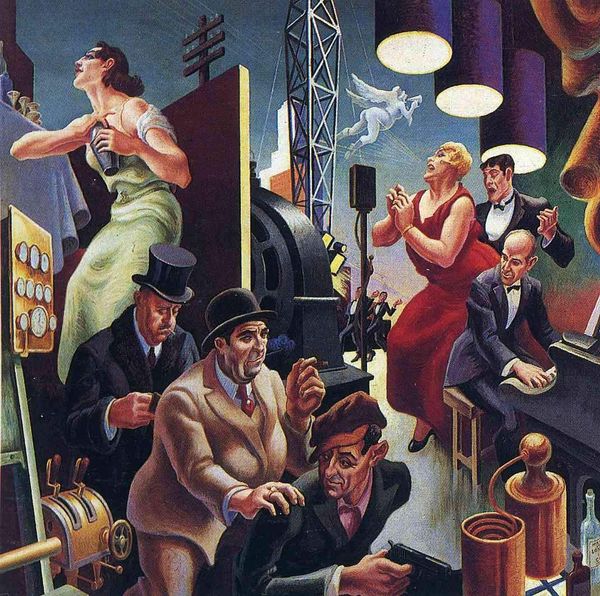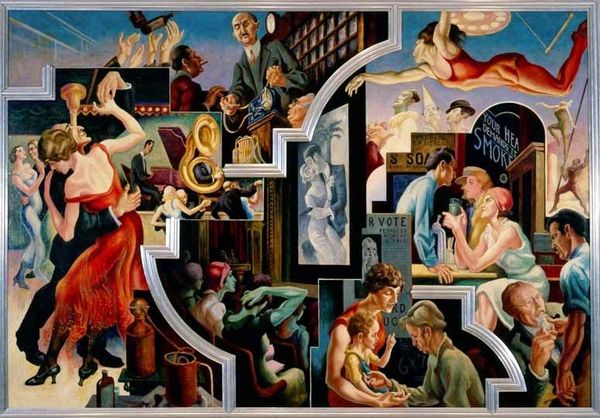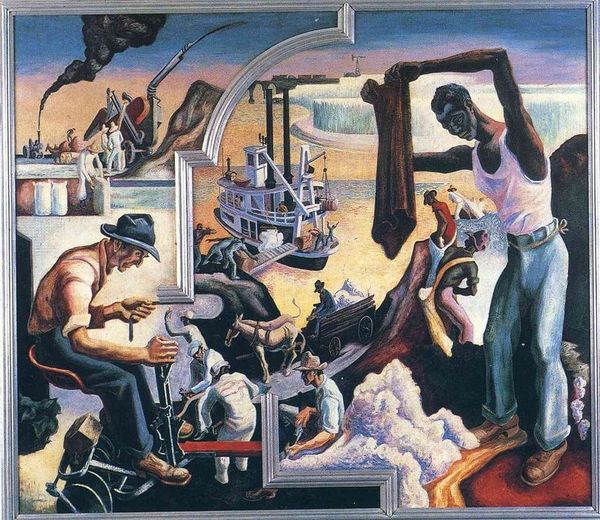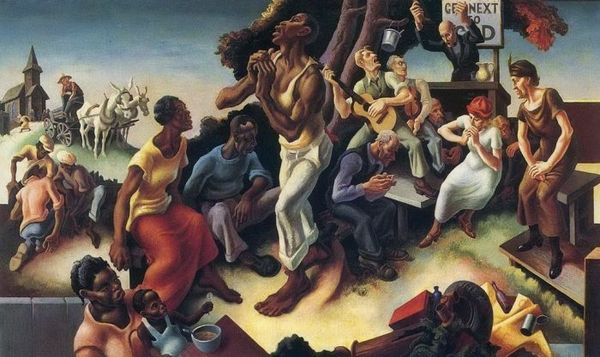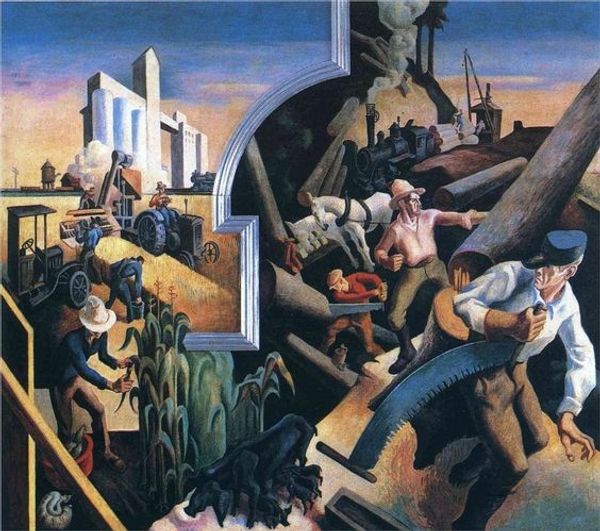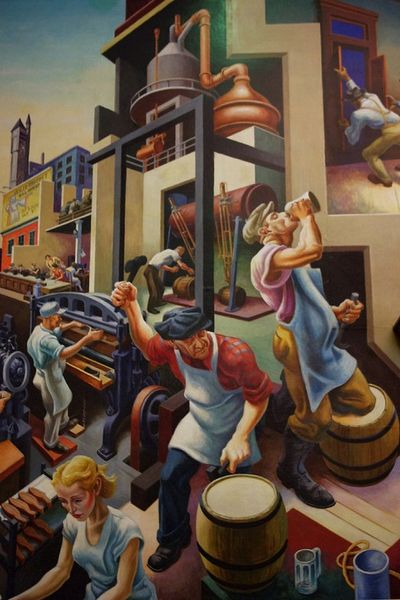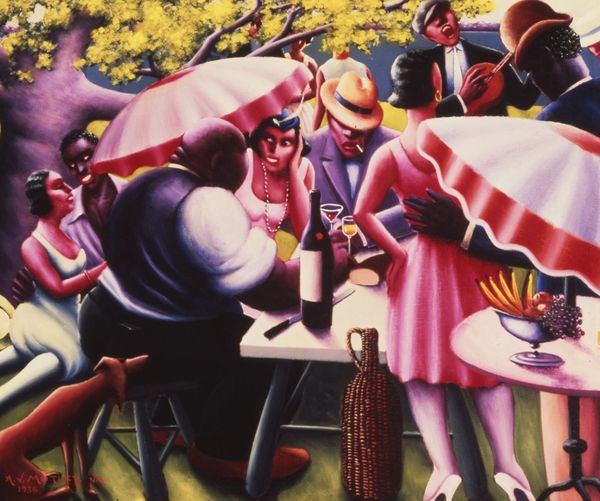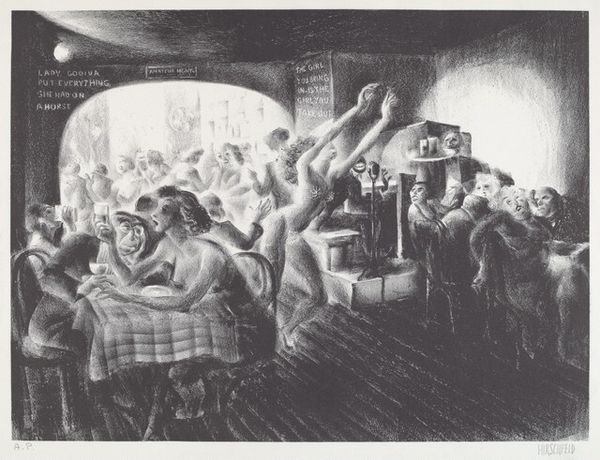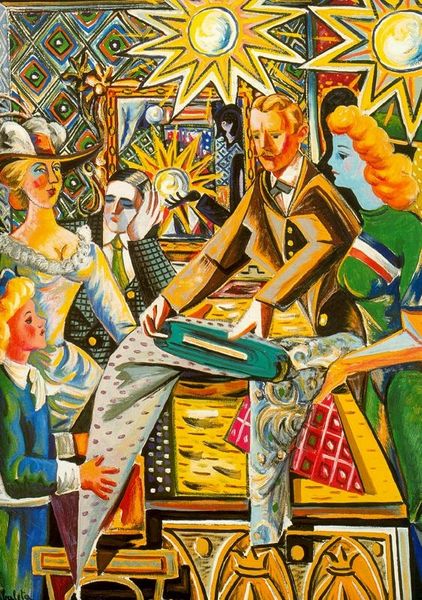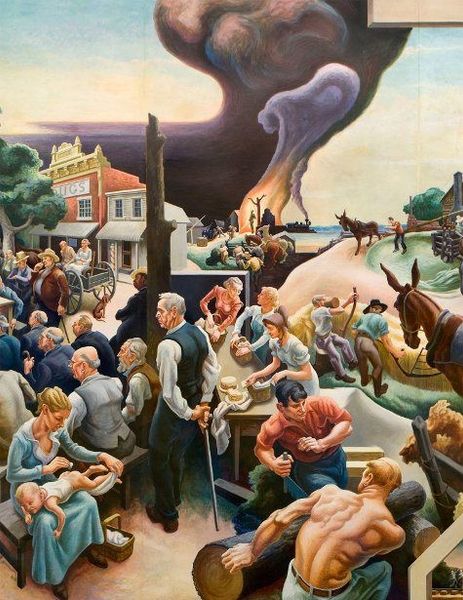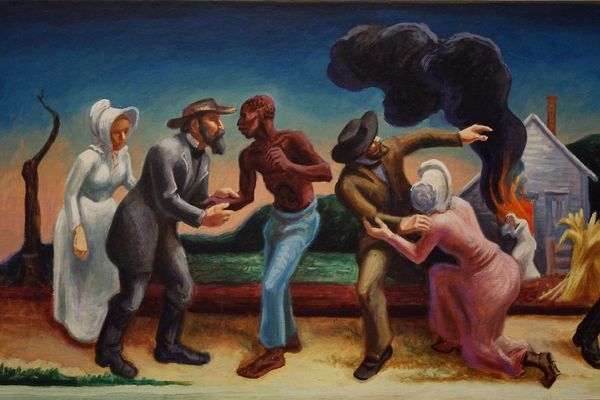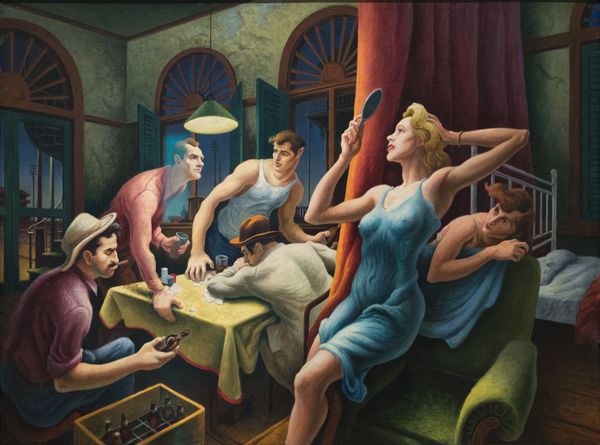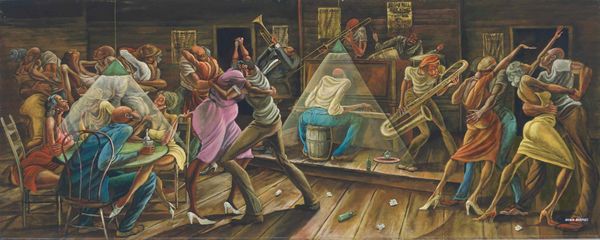
Arts of the West 1932
0:00
0:00
thomashartbenton
New Britain Museum of American Art, New Britain, CT, US
painting, oil-paint
#
narrative-art
#
painting
#
oil-paint
#
landscape
#
figuration
#
genre-painting
Copyright: Thomas Hart Benton,Fair Use
Curator: This is Thomas Hart Benton's "Arts of the West," a striking oil painting completed in 1932. Currently residing at the New Britain Museum of American Art, it's a vibrant slice of life depicted through the artist's signature Regionalist lens. What's your initial take? Editor: Chaos! Utter, beautifully rendered chaos. The figures seem to be bursting out of the frame, all twisted bodies and dramatic gestures. The scene feels both inviting and threatening, a rowdy bar fight about to spill into a hoedown. Curator: Exactly! Benton aimed to capture the energy of American life, particularly the working class. We see musicians playing, men gambling, a gunfight erupting—a mix of leisure and violence that was, for Benton, the essence of the West. How do you read those tensions? Editor: It’s interesting how Benton romanticizes that particular brand of "masculine" violence. The active participation of figures in various Western cultural scenes doesn't shy away from depicting a rough existence—gambling and armed conflicts seem normalized, as though they're part of the same spectrum. One can wonder about who benefits from such displays. Curator: Indeed. It’s difficult to divorce such images from a wider consideration of social and political dynamics. Yet, the painting was initially conceived as part of a mural cycle depicting the history of Indiana, highlighting both progress and destruction inherent in westward expansion. Editor: Context is key. How does the painting participate in constructing, or perhaps perpetuating, notions of race, class, and labor in America? Look at who gets to be carefree. The level of unrestrained freedom is tied to certain identities, while labor for othering of groups is downplayed. I'm immediately led to consider whose stories are absent or overlooked in such representation. Curator: It pushes us to investigate the politics of imagery. Benton's romanticization is a deliberate act. His personal politics and complex relationships with issues of class and representation certainly colored his vision. What initially feels chaotic resolves into a careful commentary of a place and a time. Editor: It reminds us that no portrayal is neutral. Each work exists in a context which carries a range of power structures and implications. Examining Benton through that historical and societal lens, forces one to grapple with some pretty crucial ideas. Curator: Indeed. And by probing deeper into Benton's choices, we can develop a greater knowledge of both the art, as well as the society reflected in the canvas. Editor: Art is the space where history reveals its fault lines.
Comments
No comments
Be the first to comment and join the conversation on the ultimate creative platform.
